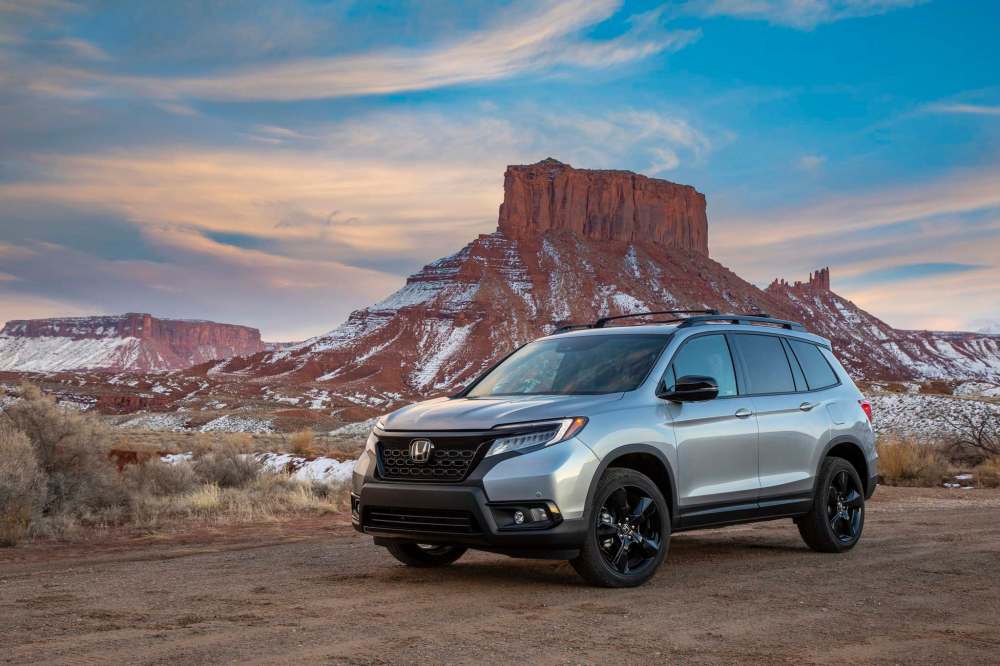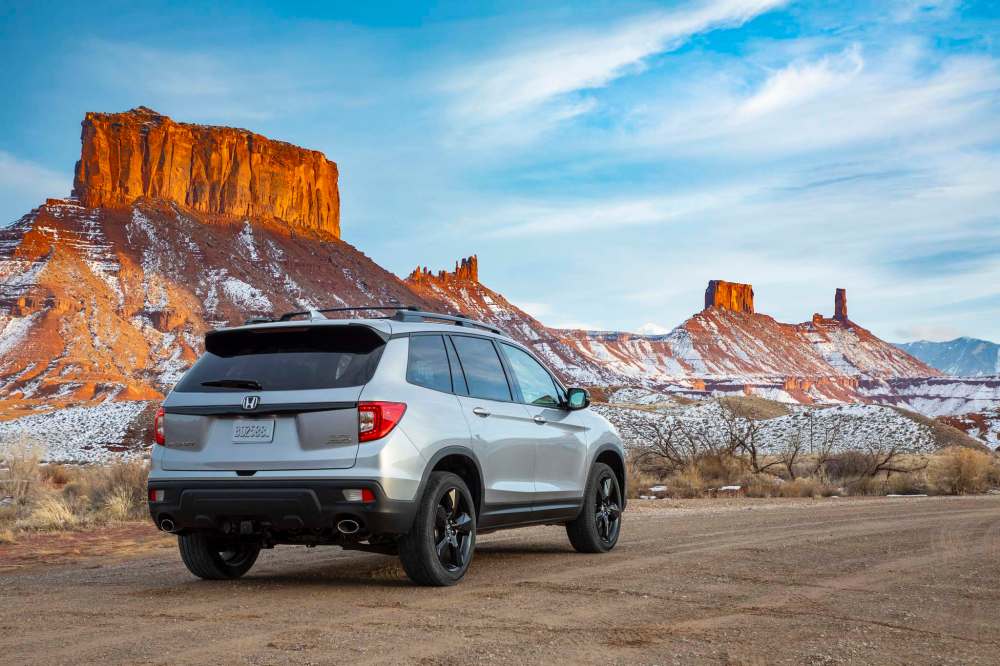Passport to new horizons
Re-imagined crossover fills gap in Honda's lineup with a compelling ride
Advertisement
Read this article for free:
or
Already have an account? Log in here »
To continue reading, please subscribe:
Monthly Digital Subscription
$1 per week for 24 weeks*
- Enjoy unlimited reading on winnipegfreepress.com
- Read the E-Edition, our digital replica newspaper
- Access News Break, our award-winning app
- Play interactive puzzles
*Billed as $4.00 plus GST every four weeks. After 24 weeks, price increases to the regular rate of $19.00 plus GST every four weeks. Offer available to new and qualified returning subscribers only. Cancel any time.
Monthly Digital Subscription
$4.75/week*
- Enjoy unlimited reading on winnipegfreepress.com
- Read the E-Edition, our digital replica newspaper
- Access News Break, our award-winning app
- Play interactive puzzles
*Billed as $19 plus GST every four weeks. Cancel any time.
To continue reading, please subscribe:
Add Free Press access to your Brandon Sun subscription for only an additional
$1 for the first 4 weeks*
*Your next subscription payment will increase by $1.00 and you will be charged $16.99 plus GST for four weeks. After four weeks, your payment will increase to $23.99 plus GST every four weeks.
Read unlimited articles for free today:
or
Already have an account? Log in here »
Hey there, time traveller!
This article was published 24/05/2019 (2336 days ago), so information in it may no longer be current.
The new car market can be a finicky bunch that changes its taste with the wind, often at a rate much quicker than automakers can respond. To develop a new model takes years, especially one that exists in a segment of the market they didn’t previously occupy.
Problem is, the crossover utility vehicle (CUV) market is dividing itself into ever-thinner slices. The practical, two-box shape with a high seating position and (often) all-wheel drive is becoming the vehicle type of choice for more and more people each year, so automakers are obliged to find new ways to attract them to their showrooms.
Now, this challenge isn’t exactly new. Honda found itself in this same position 25 years ago, when people took a liking to SUVs but the compact car company had none to offer. So they made a deal with Isuzu and marketed the mediocre Rodeo SUV as the Honda Passport. One look at Consumer Reports a few years later and it was clear the Passport didn’t measure up to other Honda models in the reliability department.

But that was then. This time around, Honda is badge-engineering one of its own models, the Pilot, putting it in the dryer and calling it the Passport.
Back to the thinner slices: even though Honda has a good selection of crossovers, ranging from the HR-V, through the CR-V and up to the Pilot, there is a gap that others are filling, and Honda wants a piece. Until now, customers looking for a mid-sized, five-seat crossover were checking out the likes of the Nissan Murano, Hyundai Santa Fe and Ford Edge. Because the CR-V is a compact and the Pilot is a seven- or eight-seater, Honda had no toys for customers playing in this sandbox. Until now, that is.
The Passport shares its 280-horsepower V-6 engine, nine-speed automatic transmission (found on higher-trim Pilots) and even its wheelbase with the Pilot. Both have a maximum towing capacity of 2,268 kilograms. And while the Passport’s front-end styling is intended to be more rugged than the Pilot, the two are nearly identical. And from the driver’s seat, it’s impossible to tell which of the two you’re sitting in.
So, what’s different and new here? Most significantly, the Passport is 102 millimetres shorter and has two rows of seats rather than three. It rides 62 mm higher for more off-road prowess and improved approach and departure angles.
One would expect the smaller Passport to be less expensive than the Pilot, and that is true and it isn’t. Looking at starting prices alone, the Passport starts at $41,990 to the Pilot’s $41,290, but that doesn’t tell the story. The Passport Sport has its own feature set but generally has more in common with the higher trim levels of the Pilot. Looking at top-end prices for the Touring trim reveals that the Pilot is $3,700 more than the Passport.
Standard equipment on the Passport Sport includes 20-inch alloy wheels, automatic idle stop, heated front seats and steering wheel, LED lighting all around, remote start, moonroof, three-zone climate control and black exterior trim.
The $45,590 EX-L gets leather seats (heated in back), parking sensors, satellite radio, an acoustic windshield and a few other goodies. The $48,900 Touring adds embedded navigation (not a big deal when the base model is equipped with Android Auto and Apple Carplay), a Wi-Fi hot spot, blind-spot warning, ventilated front seats, rain-sensing wipers, wireless phone charger, power liftgate, high-gloss interior trim, premium audio and power folding mirrors.
Our tester was the Touring trim, but looking at the options, I might consider saving a few bucks and going for the EX-L, were it not for the 550-watt sound system I’d be giving up by not springing for the Touring.
Happily, most safety features are on board regardless of trim.
The only optional ones are of the driver assistance variety, like the blind spot information and rear cross-traffic monitor. Oddly, such features are widely available on lower trims of competitive vehicles.

But all Passport models benefit from collision warning and mitigation systems, automatic emergency response, lane departure warning and mitigation, adaptive cruise control, automatic high beams and trailer stability assist.
As expected, the Passport driving experience closely matches that of the Pilot. Power is plentiful, and the nine-speed auto doesn’t get confused with all its ratio options. My observed fuel consumption ended up at 13.2 L/100 km with all city driving. That’s not too far off the official city rating of 12.5.
The driving manners of crossovers can vary greatly from car-like to van-like to truck-like, depending on how they’re built and to whom they are marketed. In that spectrum, the Passport is appropriately truck-like. It didn’t hurt that I was stepping out of a Mazda CX-5 and into the Passport, but the higher driving position, airier greenhouse and firmer ride gave the Passport a much heavier-duty feeling as a first impression.
I like the push-button gear selector that made its debut in the Pilot; it’s easy to get used to and allows Honda’s designers to make better use of the prime real estate on the centre console. There’s now space for two cupholders, a wireless device charger and a huge covered storage bin. The Passport’s instrument panel, with its electronic display flanked by two conventional gauges, looks decidedly dated and a bit low-rent, especially in comparison to the crisp, glossy centre display screen and the materials used elsewhere in the cockpit — and considering this car’s $50K price tag.
But that’s about it as far as complaints go. Honda has filled a gap in its model lineup by truncating a Pilot, and the result is a successful entry that is a compelling alternative in a market segment that is small but growing.
autoreviews@mymts.net
Instagram: @autoreviews

